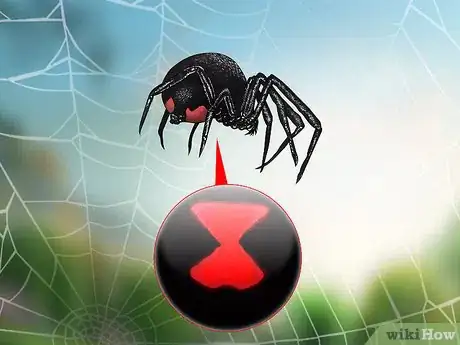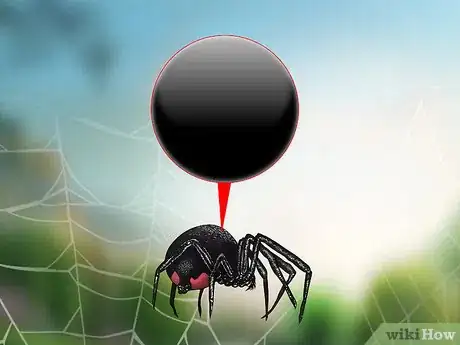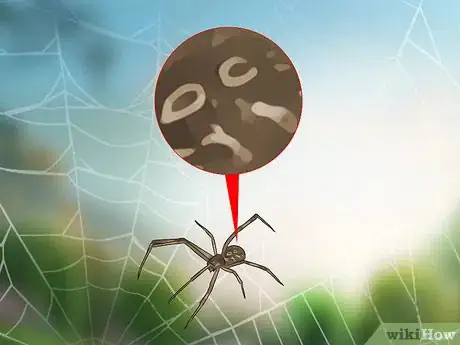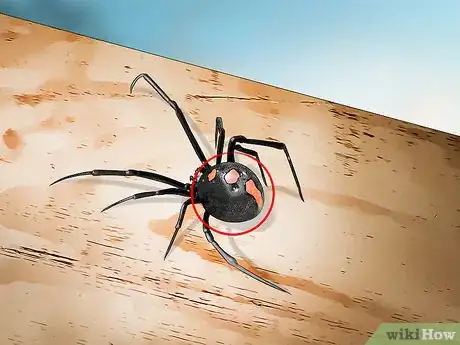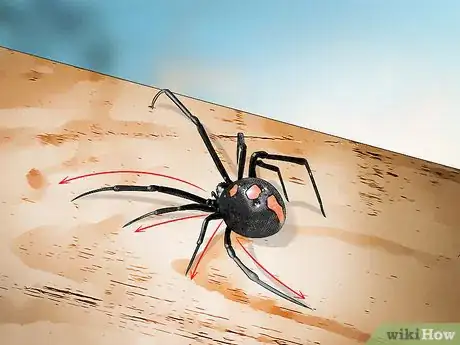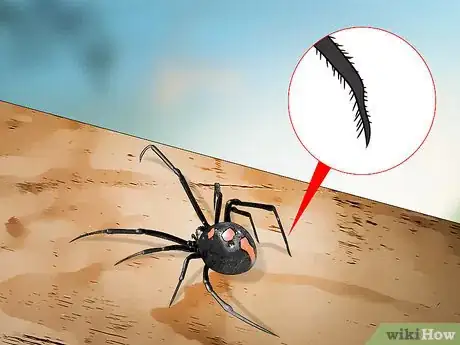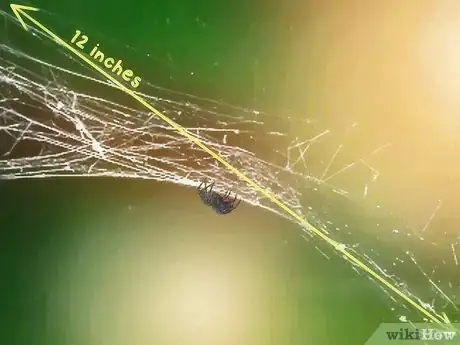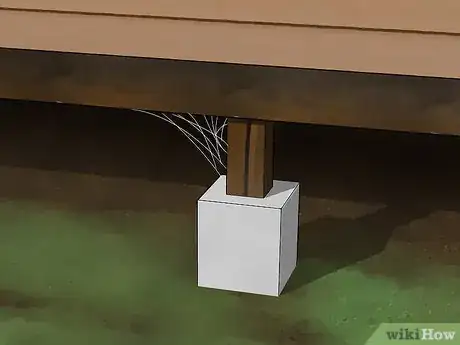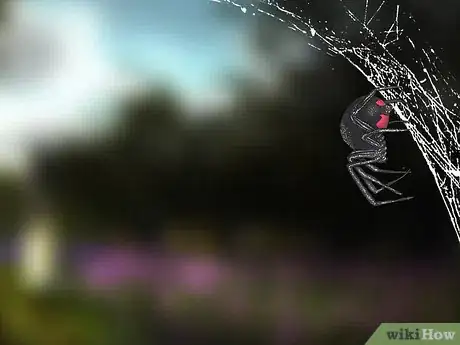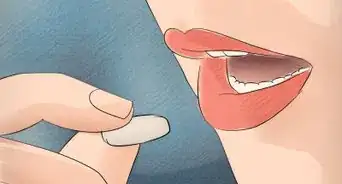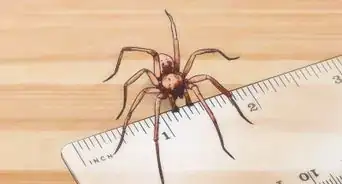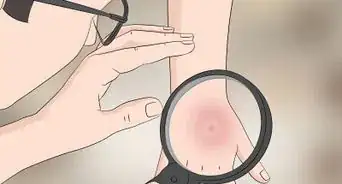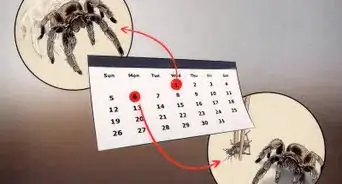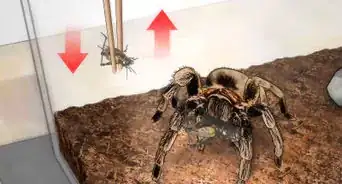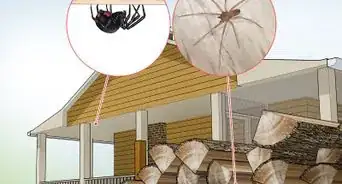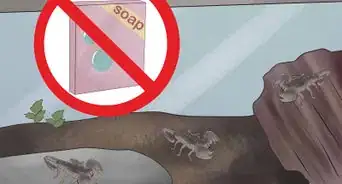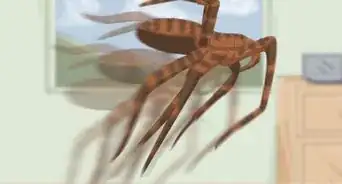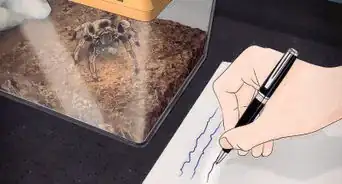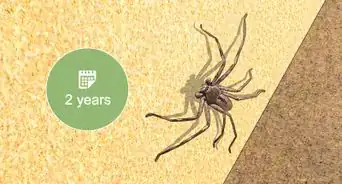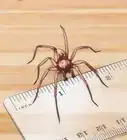This article was co-authored by Elmer Bensinger and by wikiHow staff writer, Hunter Rising. Elmer Bensinger is a Pest Control Specialist with Eden Advanced Pest Technologies in Spokane, Washington. With over 20 years of experience, Elmer specializes in integrated pest management and products such as insecticides and rodenticides. He studied business at South Puget Sound Community College.
There are 9 references cited in this article, which can be found at the bottom of the page.
wikiHow marks an article as reader-approved once it receives enough positive feedback. This article has 13 testimonials from our readers, earning it our reader-approved status.
This article has been viewed 593,430 times.
Black widows are spiders found across the world and are one of the most venomous species in the United States. Even though black widow bites are rarely fatal and only happen when you provoke a spider, they can still cause a lot of pain and make you extremely sick. If you’re worried about a spider you found near your home, there are many ways to tell if you’re dealing with this dangerous species. We’ll start with some distinguishing physical features to look out for and move on to information about the spiders’ webs and where to find them.
Steps
Expert Q&A
Did you know you can get premium answers for this article?
Unlock premium answers by supporting wikiHow
-
QuestionHow can I get rid of black widow spiders naturally?
 Elmer BensingerElmer Bensinger is a Pest Control Specialist with Eden Advanced Pest Technologies in Spokane, Washington. With over 20 years of experience, Elmer specializes in integrated pest management and products such as insecticides and rodenticides. He studied business at South Puget Sound Community College.
Elmer BensingerElmer Bensinger is a Pest Control Specialist with Eden Advanced Pest Technologies in Spokane, Washington. With over 20 years of experience, Elmer specializes in integrated pest management and products such as insecticides and rodenticides. He studied business at South Puget Sound Community College.
Pest Control Specialist
-
QuestionCan I use pesticides to get rid of black widows?
 Elmer BensingerElmer Bensinger is a Pest Control Specialist with Eden Advanced Pest Technologies in Spokane, Washington. With over 20 years of experience, Elmer specializes in integrated pest management and products such as insecticides and rodenticides. He studied business at South Puget Sound Community College.
Elmer BensingerElmer Bensinger is a Pest Control Specialist with Eden Advanced Pest Technologies in Spokane, Washington. With over 20 years of experience, Elmer specializes in integrated pest management and products such as insecticides and rodenticides. He studied business at South Puget Sound Community College.
Pest Control Specialist
Warnings
References
- ↑ https://www.osha.gov/sites/default/files/publications/black_widow_spider.pdf
- ↑ Elmer Bensinger. Pest Control Specialist. Expert Interview. 5 February 2021.
- ↑ https://www.osha.gov/sites/default/files/publications/black_widow_spider.pdf
- ↑ http://ipm.ucanr.edu/PMG/PESTNOTES/pn74149.html
- ↑ http://ipm.ucanr.edu/PMG/PESTNOTES/pn74149.html
- ↑ https://www.aces.edu/blog/topics/home/the-black-widow/
- ↑ https://www.aces.edu/blog/topics/invasive-wildlife-control/black-widow-and-recluses/
- ↑ https://www.livescience.com/39919-black-widow-spiders.html
- ↑ https://www.aces.edu/blog/topics/home/the-black-widow/
- ↑ http://ipm.ucanr.edu/PMG/PESTNOTES/pn74149.html
- ↑ https://idfg.idaho.gov/sites/default/files/we_octt17blackwidowspider_final.pdf
- ↑ http://ipm.ucanr.edu/PMG/PESTNOTES/pn74149.html
- ↑ https://www.aces.edu/blog/topics/home/the-black-widow/
- ↑ https://idfg.idaho.gov/sites/default/files/we_octt17blackwidowspider_final.pdf
- ↑ https://www.osha.gov/sites/default/files/publications/black_widow_spider.pdf
- ↑ https://medlineplus.gov/ency/article/002858.htm
- ↑ https://kidshealth.org/en/kids/black-widow.html
About This Article
To identify a black widow, look for traits commonly found on black widows, like a bright red marking that resembles an hourglass on the spider’s round belly, which are found on female spiders. Additionally, female black widows will have shiny, hairless black bodies, and males are marked with brown and white. All black widows have long legs, and their hind legs are covered in bristles, which help them kill their prey. For more tips for spotting a black widow spider, including how to identify a black widow’s web, keep scrolling!
